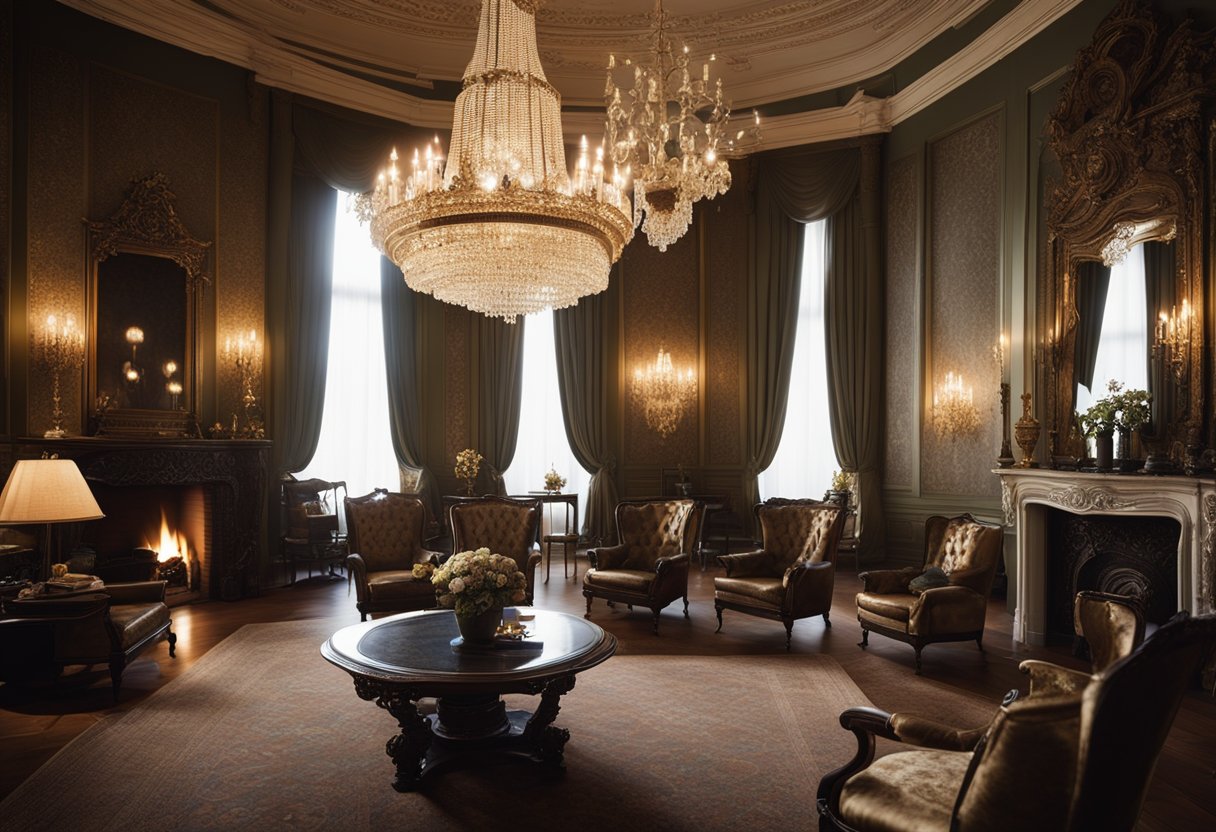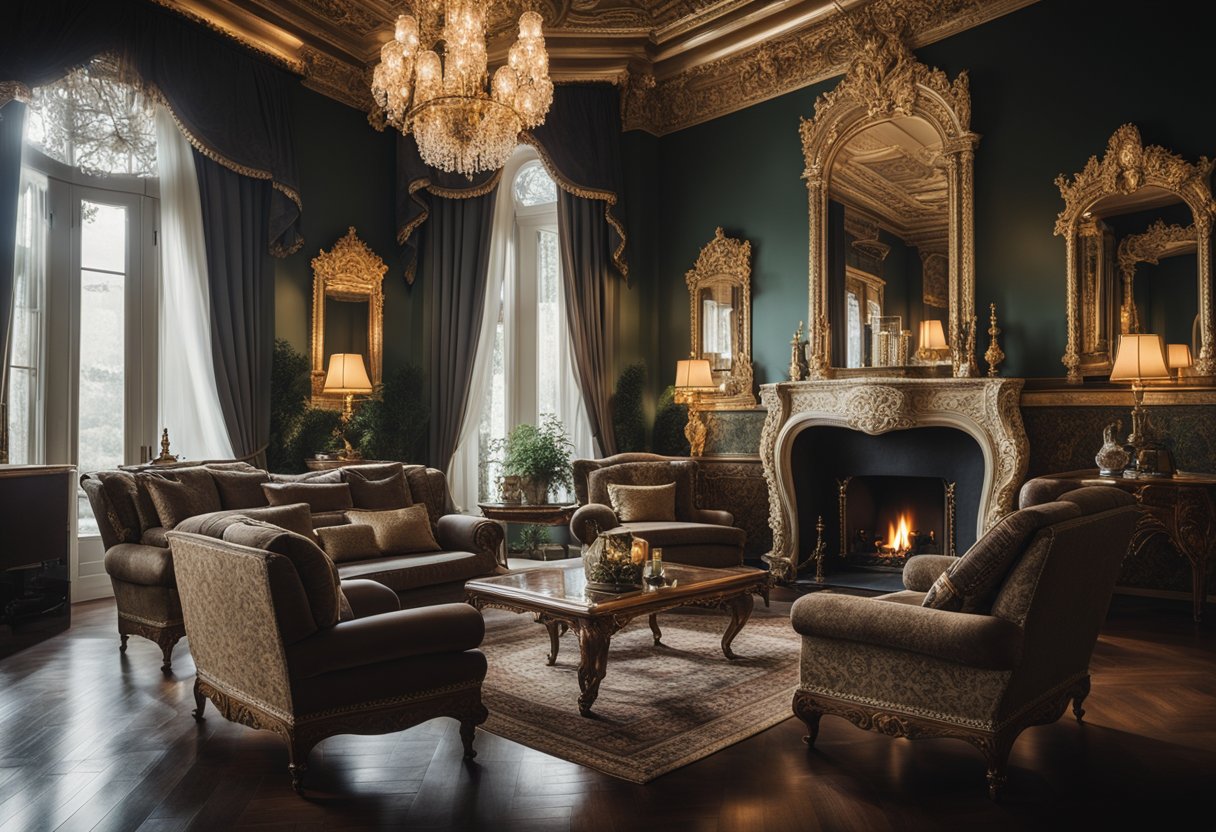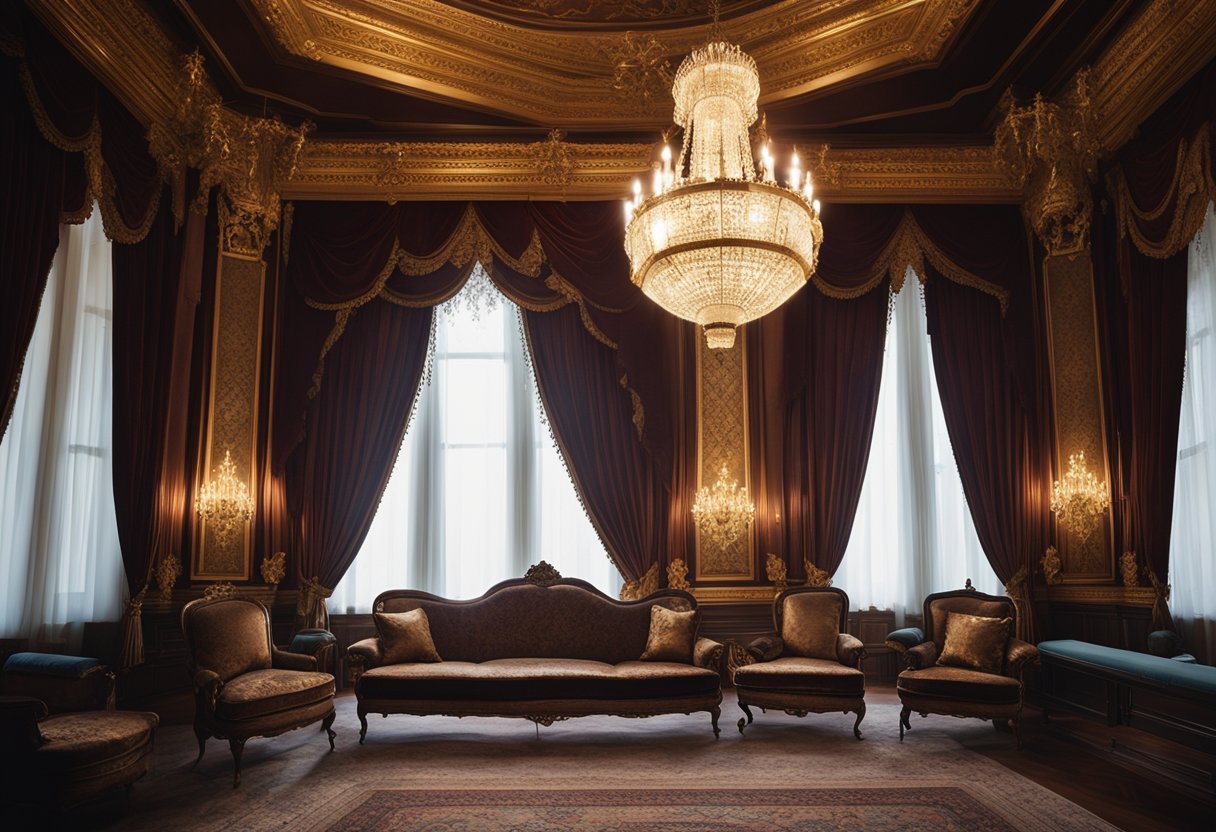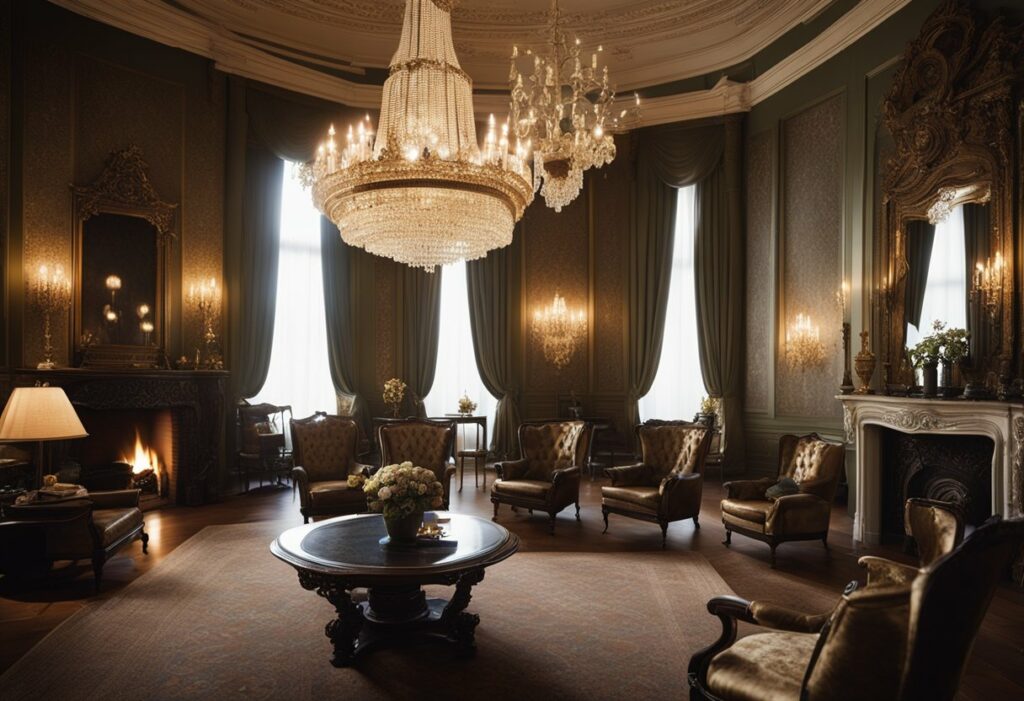Victorian Interior Design History: Discover the Fascinating Origins and Evolution of Classic British Style
Victorian interior design is a style that originated in the United Kingdom during the reign of Queen Victoria from 1837 to 1901. It is characterized by a mix of old and new styles, ornate details, and rich colours. This design style was popularized during the Industrial Revolution, which allowed the middle classes to increase their prosperity and invest in the decor and design of their homes.

The Victorian era was a time of innovation and creativity, and this was reflected in the interior design of the time. The period saw the cheap mass-production of countless household items, making them accessible to the masses. This allowed people to decorate their homes with a wide variety of objects, from furniture to textiles to wallpaper. The Victorian era was also marked by a fascination with exotic cultures, which was reflected in the design of homes and furnishings.
Key Takeaways
- Victorian interior design is a style that originated in the United Kingdom during the reign of Queen Victoria from 1837 to 1901.
- The Victorian era was a time of innovation and creativity, and this was reflected in the interior design of the time.
- The period saw the cheap mass-production of countless household items, making them accessible to the masses.
Evolution of Victorian Interior Design

Are you curious about how Victorian interior design evolved? The Victorian era, spanning from 1837 to 1901, was a period of great innovation and creativity in England. The Industrial Revolution had a significant impact on the design trends of the time. Here are some of the key factors that influenced the evolution of Victorian interior design.
Influence of the Industrial Revolution
The Industrial Revolution brought about significant changes in manufacturing processes, leading to the mass production of household items. This made them more accessible to the middle classes, who could now invest in the decor and design of their homes. The result was an explosion of creativity in interior design, with new styles and motifs emerging.
Key Characteristics and Motifs
Victorian interior design is characterised by its ornate and rich décor. The use of patterns, especially in wallpapers, was prevalent, with floral, geometric and damask patterns being the most popular. Furniture was often heavy and intricately carved, with dark woods such as mahogany and walnut being favoured. Gothic Revival was also a popular trend, with its emphasis on arches, spires and stained glass.
Famous Designers and Their Impact
William Morris was one of the most famous designers of the Victorian era. He was a key figure in the Arts and Crafts movement, which aimed to promote traditional craftsmanship in the face of mass production. Morris was a strong advocate for good design, believing that it should be accessible to everyone. He designed wallpapers, fabrics and furniture, with his work being characterised by its intricate patterns and natural motifs.
Other famous designers of the Victorian era include Christopher Dresser, who was known for his innovative use of materials, and Charles Eastlake, who advocated for simpler and more functional furniture design.
Overall, the Victorian era was a time of great innovation and creativity in interior design. The influence of the Industrial Revolution led to the mass production of household items, making them more accessible to the middle classes. This, in turn, led to an explosion of creativity in interior design, with new styles and motifs emerging.
Aesthetic Elements and Materials

When it comes to Victorian interior design, the aesthetic elements and materials used are key to creating the opulent and ornate look that defines the style. From textiles and upholstery to wall treatments and coverings, and furniture and woodwork, every detail matters.
Textiles and Upholstery
Textiles and upholstery play a significant role in Victorian interiors. The Victorians favoured rich, luxurious fabrics such as velvet, brocade, and tapestries. The use of jewel tones was also common, with forest green, navy blue, and burgundy being popular choices. Florals were a characteristic feature of Victorian style, with floral patterns often found on curtains, upholstery, and carpets. Tassels and fringe were also used to add texture and ornamentation to furnishings.
Wall Treatments and Coverings
Wall treatments and coverings were another way to add opulence and statement to Victorian interiors. Patterned wallpaper was a popular choice, with floral patterns and stripes being common. Wainscoting and mouldings were also used to add architectural features to walls and ceilings. Stained glass windows were a symbol of wealth and power and were often found in Victorian houses.
Furniture and Woodwork
Furniture and woodwork were also key elements of Victorian interiors. The use of antiques was common, and clean lines were not a priority. Instead, ornate carvings and decoration were favoured. Oak was a popular choice for furniture, and wrought iron fixtures were also used. Chandeliers were a statement piece and often found in living rooms and bedrooms. Portraits and decorative products were used to show off status and wealth.
Overall, Victorian interior design was accessible to the middle class, thanks to the globalization of goods and materials. However, it still retained its opulence and ornate character. The use of rich colours, textures, and fabrics, along with architectural features and statement pieces, created a look that was unmistakably Victorian.
Frequently Asked Questions

What are the defining characteristics of Victorian style interior design?
Victorian interior design is characterised by opulence, elegance, and a strong emphasis on intricate details. This style incorporates a variety of styles from the surrounding time periods, including Gothic, Rococo, and Baroque. Victorian homes often feature high ceilings, large windows, and ornate mouldings. The colour palette is typically rich and bold, with jewel tones inspired by gemstones. Patterns and textures are also prominent, with damask, brocade, and velvet being popular choices for upholstery and drapery.
How did the historical context influence Victorian interior aesthetics?
Victorian interior design emerged during the reign of Queen Victoria, which lasted from 1837 to 1901. This was a time of great social and economic change, as the Industrial Revolution transformed the way people lived and worked. The middle classes were able to increase their prosperity and invest in the decor and design of their homes. As a result, Victorian interior design reflects the values and aspirations of this newly affluent group, with a focus on luxury, comfort, and elegance.
In what ways did Victorian interior design evolve over the period?
Victorian interior design evolved over the course of the period, as new technologies and materials became available. In the early Victorian era, the emphasis was on comfort and functionality, with simple, practical furnishings. As the period progressed, however, the style became more ornate and elaborate, with a greater emphasis on luxury and opulence. The latter part of the Victorian era saw the emergence of the Arts and Crafts movement, which rejected the excesses of Victorian design in favour of a simpler, more natural aesthetic.
Why did Victorian era homes typically feature such ornate and elaborate decor?
Victorian era homes typically featured ornate and elaborate decor as a reflection of the values and aspirations of the newly affluent middle classes. These homes were designed to impress and to showcase the wealth and status of their owners. The ornate decor was also a way to demonstrate the skills of craftsmen and artisans, who were highly valued during this period.
How were the walls and ceilings adorned in a typical Victorian household?
Walls and ceilings in a typical Victorian household were often adorned with decorative mouldings and plasterwork, including cornices, ceiling roses, and friezes. Wallpaper was also a popular choice for wall coverings, with patterns ranging from floral motifs to intricate damasks. In more affluent homes, murals and frescoes were sometimes used to decorate walls and ceilings.
What impact has modern design had on interpreting Victorian interior styles?
Modern design has had a significant impact on interpreting Victorian interior styles. While the Victorian era was characterised by an emphasis on luxury and opulence, modern interpretations of the style often focus on simplicity and minimalism. Elements of Victorian design, such as ornate mouldings and rich colour palettes, are often used in contemporary design to add a touch of elegance and sophistication.



